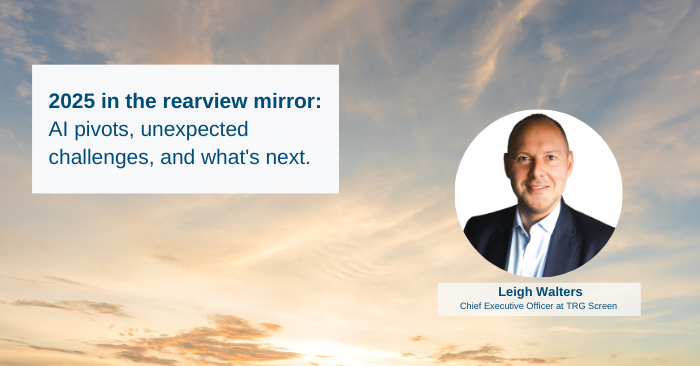The multi-billion-dollar world of financial market data is not immune to uncertainty, as rapid technological and even social change fuels demand for new and ever more complex data and innovative ways to deliver it.
Just keeping up with where data is sourced, how it is used and how much it costs is potentially a massive headache for the unwary. But given the right tools, which are also adapting to changes in the market, data users and providers can find light in the darkness.
Here are five themes to watch in 2023:
• Rising costs and how to manage them
• Keeping up with increasingly complex market data
• The growing role of digital assets
• Sleep easier with a dedicated market data management system
• Hand it over – consider a managed service
Maybe 2023 won’t be as scary as it looks right now.
Rising costs and getting on top of them
According to an authoritative annual report by Burton-Taylor International Consulting. spending on market data hit a record high just shy of $44.3 billion in 2024, and expectations are that the next report will show 2025 was another record year.
Data vendors and originators, such as exchanges, affected by inflation like everyone else, are raising their prices. For example, Bloomberg is expected to deliver its biennial price rise for its ubiquitous terminal from January, NeuGroup reported in August.
However, many in the market say the problem is not just rising costs; it is also keeping track of who is using the data and how, and whether they are charging or paying the correct amount for it.
Further muddying the waters, the massive movement to remote working, which took hold in the pandemic, has posed questions over whether a home worker needs a separate data license, and how to prevent duplicating requests for the same data.
Most big financial firms use a data subscription management system to keep track of data spending and usage. However, many mid-sized firms manage their data without a dedicated system, instead using spreadsheets or software that was not designed to support the increasingly complex market data landscape.
An acknowledged leader in the industry is TRG Screen, whose Optimize platform delivers unparalleled transparency for market data managers on how services are being used by teams, individuals and apps.
At the apex of the platform stands Optimize Insights, which has been hailed as a paradigm shift in market data management and reporting.
Optimize Insights unlocks data-driven intelligence on market data usage and spending and presents it on BI-powered, customizable dashboards and visualizations in the most ground-breaking subscription platform available. Automatic trend analysis shows managers why costs are changing.

Clarity on spending and usage is also a vital step towards ensuring data usage is compliant with increasingly complex contracts, licenses and policies, minimizing the risk of an unpleasant and time-consuming audit.
Data complexity: are you keeping up?
The volume of market data is expanding by the year, driven by specialist demand and advances in technology. This leads to greater complexity in terms of where the data comes from and how it is delivered.
A 2021 study by Coalition Greenwich and Google Cloud highlighted a big shift among market data providers and consumers towards the cloud. Fully 93% of exchanges, trading systems, and data providers surveyed were offering cloud-based services and nearly all large buy-side firms were consuming and managing market data via the cloud.
Where data used to be consumed via a terminal, it now reaches the consumer by new and less easily controlled means, such as files, APIs and the cloud, and is used in numerous applications. An increasing number of vendors and exchanges then monetize it via an ever-expanding array of licenses, policies and audits.
In turn, this makes staying compliant more of a challenge, with a knock-on effect on invoice reconciliation and accurate cost allocation.
It is even more challenging for the firms – usually mid-sized – without a purpose-built management system, who must try to stay compliant, ensure they are not paying for data they don’t use, and may have to handle time-consuming audits while essentially flying blind.

Alternative data, which arguably came to the fore in the pandemic
when financial firms were looking for an edge by supplementing traditional datasets with indicators from alternative sources, has ballooned. Precedence Research puts the value of the global alt-data market at $2.1 billion in 2021 and forecasts growth to more than $149 billion in 2030.
As things stand, expectations are that firms have little choice but to sign up for the new data and deal with any compliance issues.
Other triggers of the data explosion include demand for numbers on the mega-trend of ESG investing and the growth of data derived by use of Artificial Intelligence. As another Burton-Taylor report puts it: “As the uses of market data extend beyond the trading desk into the middle- and back-office functions, the budgets of investment banks and asset managers have become increasingly inelastic.”
This massive growth of market data has prompted demand for more sophisticated monitoring and reporting tools to help users keep track of their data usage and spend, and to banish any uncertainty over compliance.
Optimize Insights automatically delivers actionable insights into how market data and other enterprise subscriptions can be optimized. It offers users a high-level picture of market data usage and spend, and the ability to drill down into the granular detail data managers increasingly need. APIs allow users to integrate data from internal apps and third-party systems.
When it comes to compliance Optimize Insight allows market data managers to demonstrate compliance with vendor agreements or root out underutilized services and “dormant” contracts, saving money and precious time.
Other TRG Screen products built to take the pain out of compliance include PEAR, an industry-leading exchange database of information on policies and pricing, and ACT (Application Compliance Tool), which delivers transparency on compliance obligations to exchanges for all proprietary applications. Xmon, offered in partnership with Xpansion, helps users track their usage of reference data and prevents duplicate requests.
Cashless society: the rise of digital assets
Despite the recent collapse of the FTX cryptocurrency exchange, there seems little doubt that digital assets will continue to gain prominence in 2023. Indeed, some say the FTX collapse will lead to more regulation in the sector that will make it more mainstream.
U.S. authorities have published a series of reports since President Joe Biden signed an executive order “on responsible development of digital assets” earlier this year, and other global financial centers are formalizing frameworks to accelerate legislation.
While it's hard to get completely accurate forecasts of crypto and digital asset industry growth, there is no question that it is expected to continue to grow significantly in the next 5 years, and so too will the volume of market data generated by associated transactions. The sector is already gushing market data, whether it be price data for individual cryptocurrencies or for indices, and the burden will only grow as financial markets regulators build out appropriate regulatory frameworks for crypto and other digital assets.

Just as with traditional financial market data, information related to digital asset market data subscriptions need to be stored, easily accessed, and managed. TRG Screen already enables financial firms to manage both digital and traditional market data within a single enterprise solution. Its Optimize platform allows market participants, including purely digital asset players to manage their entire market data inventory.
Do I really need a market data management system?
Not if you enjoy unpleasant audits, surprise invoices, and financial penalties for compliance breaches. Audits are a fact of life in the market data business, but the process is a whole lot smoother for firms with market data management software solution.
As mentioned above, the biggest banks, who can spend upwards of $500m a year on market data, have dedicated teams using subscription management tools to ensure the business gets the data it needs and remains compliant. (also check our whitepaper: Record Market Data Spend Highlights Need To Track Costs)
Mid-sized firms often lack the workforce and the management time to ensure data resources are optimally allocated and that usage is always compliant. With the best will in the world, manual management of market data can lead to potentially costly errors, industry experts say.
“Market data is a special and complex beast. Service from one vendor can be delivered over another vendor’s platform or feed and you could be billed by a third and even under contract by a fourth vendor,” said Richard Mundell, TRG Screen’s Chief Product Officer, urging firms trying to manage their market data without expert help to acquire the appropriate software.
Properly managing data subscriptions is not just a defensive move. It can also save money. TRG Screen saved one hedge fund - using Xmon - 45% of its data spend due to greater transparency and licensing compliance.
Optimize Insights shows how and why data costs are changing, optimizes resource allocation, ensuring the right data reaches the right people, and measures user compliance, among other benefits. TRG Screen says this greater visibility can deliver rapid improvements in return on investment (ROI), up to 30% in the first year. (Calculate how much you can save)
For the firm that doesn’t want its own staffed subscription management system, there is always the option of making use of a managed service to look after its data subscription management needs….
Tough to manage? We’ve got this
Market data management is increasingly available as a managed service, in which a third-party provider does most of the heavy lifting without the firm needing to add headcount to manage the ever-expanding data inventory.
Managed services may also become a necessity as older and more experienced staff retire, with insufficient junior staff coming through to replace them, according to a report by WatersTechnology. With data-minded graduates seeking more exciting roles in financial services, this leaves a skills gap that is not bridged by tailored university courses.
Once again, choose your provider carefully. Many do not have a proprietary system, unlike TRG Screen, which built its own proven software. Their solutions not only optimize data spending, but they also cover data usage, compliance, and requests.
Users of managed services benefit from economies of scale, while having access to best-in-class solutions. TRG Screen offers the full spectrum of managed services, from inventory management to all aspects of market data and information subscriptions.
Even TRG Screen’s flagship Optimize Insights is available as a managed service.
The coming year may well not be a bed of roses. However, developments in the market data management industry suggest the hard-pressed data manager’s problems may not be as prickly as they seem.
Want to learn more?





